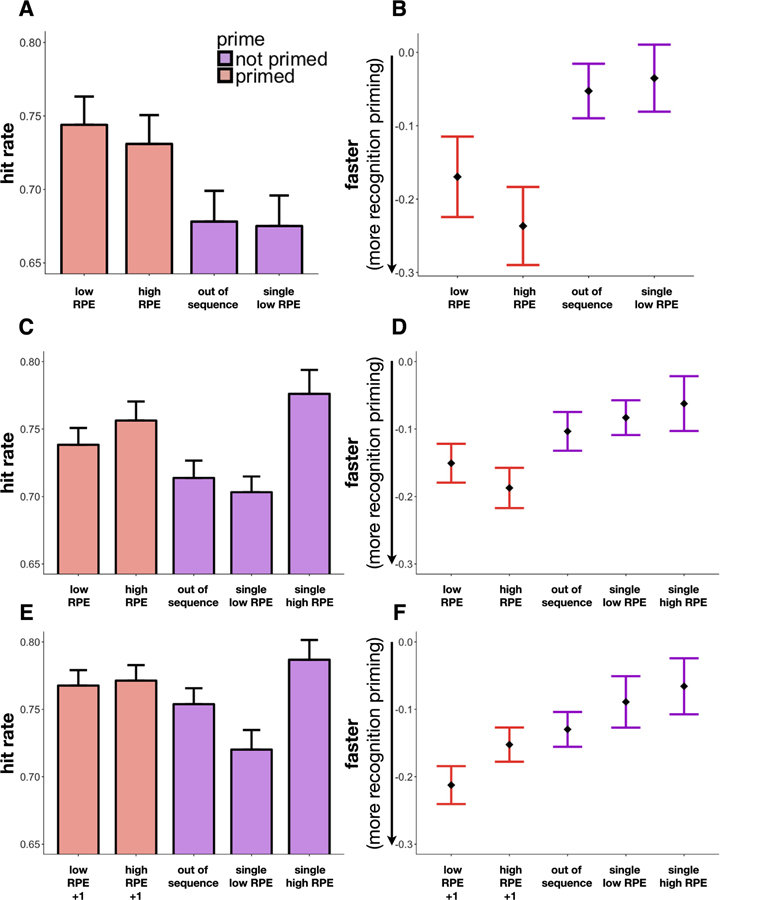Fig. 2.
Recognition priming results. For paired targets (“low RPE”, “high RPE” and “out of sequence”), memory is conditioned on correct recognition of the first item in the pair, and response latency is additionally conditioned on correct recognition of the target (i.e., latency is only for “hits” in all conditions). A. Exp. 1: Recognition memory as a function of item condition. Memory for the sequentially primed targets (low and high RPE) was better than the out-of-sequence and (unpaired) “single low RPE” targets. B. Exp. 1: Response latencies for correct recognition as a function of item condition. Sequentially primed targets were retrieved faster than items that were not sequentially primed. C. Exp. 2: Recognition memory as a function of item condition. Memory for the primed high-RPE target was no different than the “single high RPE” target that had not been primed. Thus, memory accuracy did not provide evidence for recognition priming of high-RPE events. D. Exp. 2: Response latencies for correct recognition as a function of item condition. Primed high-RPE targets were retrieved faster than the non-primed high-RPE targets and out-of-sequence targets, thereby demonstrating recognition priming for high-RPE events. E. Exp. 3: Recognition memory as a function of item condition. Primed targets (where the prime was the item presented two trials before the target during encoding) were not remembered better than the out-of-sequence targets. F. Exp. 3: Response latencies for correct recognition as a function of item condition. The high-RPE +1 target was no longer retrieved faster than the out-of-sequence target, whereas the low-RPE +1 target was still retrieved faster, demonstrating intact recognition priming. Moreover, latencies for the high-RPE +1 target were significantly slower than the low-RPE +1 target. Error bars represent standard error of the mean (SEM).

